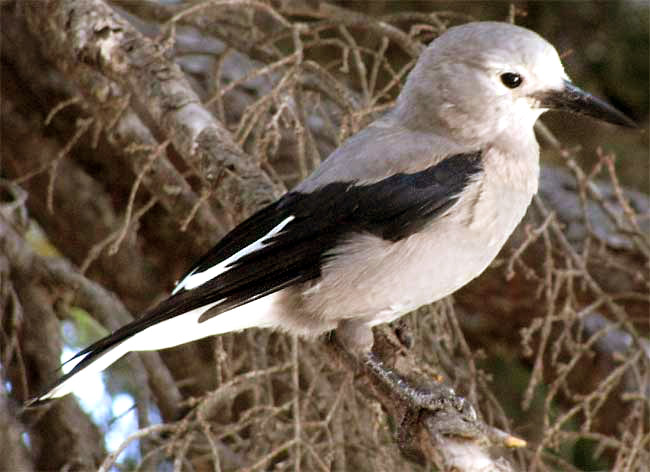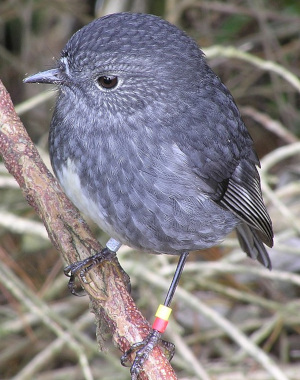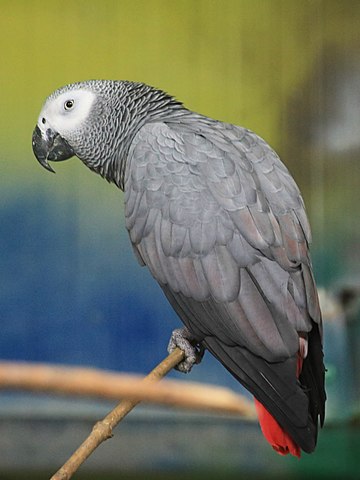 If you live in western North America and sometimes visit parks high in the mountains with evergreen forests near the timberline, you may know the boldly black-and-white bird with a rough, drawn-out, cranky-sounding "song," the Clark's Nutcracker, shown at the right. Nutcrackers are closely related to the jays who frequent our backyards.
If you live in western North America and sometimes visit parks high in the mountains with evergreen forests near the timberline, you may know the boldly black-and-white bird with a rough, drawn-out, cranky-sounding "song," the Clark's Nutcracker, shown at the right. Nutcrackers are closely related to the jays who frequent our backyards.
In late summer, Clark's Nutcrackers harvest seeds of Pinyon Pines. They stuff the seeds into pouches below their tongues, and then may fly several miles and bury the seeds. A single nutcracker may bury as many as 33,000 Pinyon Pine seeds in groups, or caches (pronounced CASH-es), of four of five seeds each. When winter comes and food is scarce, the bird returns to its caches to feed, apparently remembering where in the vast landscape the caches are located.
Observations like this have caused many scientists to wonder just how good bird memory is, and ingenious experiments have been performed to find out.
 North Island Robin, Petroica australis longipes; photo courtesy of Tony Wills and Wikimedia Commons
North Island Robin, Petroica australis longipes; photo courtesy of Tony Wills and Wikimedia CommonsA 2020 study of North Island Robin memory by Rachael Shaw and Annette Harvey in New Zealand, showed that "Birds that had been trained to peck open lids to retrieve a concealed food reward spontaneously solved a lid opening task between 10 and 22 months since they had last encountered the lid opening apparatus." In contrast, North Island Robins not trained to peck open the lids didn't learn the process. This insight is especially valuable because it suggests that individuals in threatened species, such as the North Island Robin, can be taught new survival skills.
 Grey Parrot, Psittacus erithacus, in Bucharest Zoo, Romania; photo courtesy of Alexandru Panoiu of Bucharest, and Wikimedia Commons
Grey Parrot, Psittacus erithacus, in Bucharest Zoo, Romania; photo courtesy of Alexandru Panoiu of Bucharest, and Wikimedia CommonsIrene Pepperberg, who studies Grey Parrots like the one at the right, has observed "a visual working memory that outperforms that of young children and is mostly equivalent to that of adult humans." For example, Pepperberg writes, fresh, organic cherries are available for only a short period once a year, so most of the year her parrot Alex never heard the word "cherry." However, when cherries where placed before him a year after they'd last been offered, he'd call out an "extremely clear 'CHERRY.'" Also, Pepperberg's parrots seem to remember previous students for decades. Pepperberg describes her parrots' memories in an online article entitled How Good is a Parrot's Long-Term Memory?
Some bird groups have better memories than others. Among those with the best memories are those of the Crow Family (crows, ravens, jays, magpies, nutcrackers), the Parrot Family, chickadees and pigeons. It's often said that birds who cache food that later must be found have evolved the best memories. However, parrots and pigeons aren't known for their caching. Also, woodpeckers cache food but aren't known for their great memories.
In some special cases a bird's memory may be better than a human's, yet no one claims that any bird's overall intelligence is greater than a humans. Part of the puzzle is that some memory is innate, while other memory is learned. The human community has a collective memory that can be passed on from generation to generation. Certain birds have been shown to pass on learned behaviors to younger birds. But, birds don't have books and the Internet.